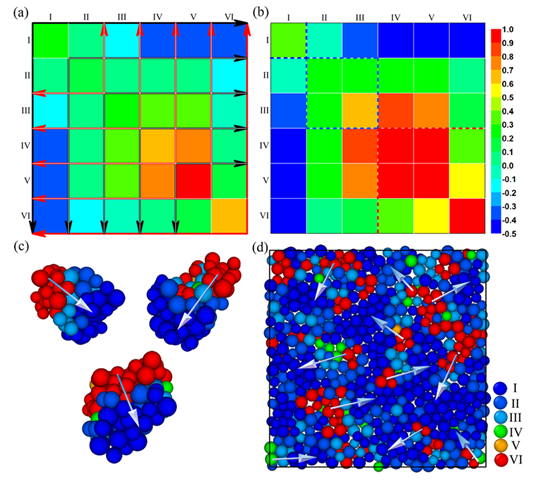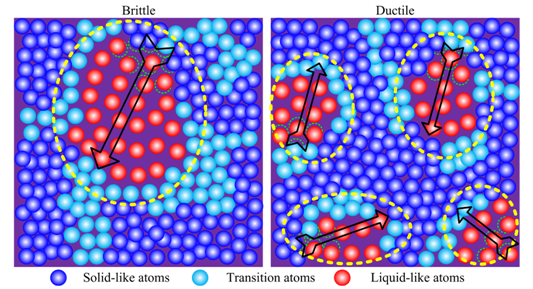Edited by: William Mosteller
Translated by: An Siyuan
Date: September 3rd, 2018
HIT News(Material/Article)On July 30th, Prof. Su Yanqing, of the national key laboratory of metal precision thermal processing of our school, cooperated with Professor Robert Ritchie, of the University of California at Berkley’s Lawrence Berkeley National Laboratory, to co-author "Nanometer-scale gradient atomic packing structure surrounding soft spots in metallic glasses". The article was published in the well-known Materials Science journal, npj Computational Materials. This paper uses molecular dynamic simulations to reveal the gradient distribution of soft-area packing structures in amorphous alloys on the nano-scale. This finding provides an important theoretical basis for further understanding and designing high-strength, tough amorphous alloys. The first author of the thesis is Wang Binbin, a 2014 Ph.D. student of the School of Materials, who was jointly guided by Professor Su Yanqing and Associate Professor Luo Liangshun. Professor Su Yanqing and Professor Ritchie are co-authors of the paper.
Nature Cooperative Journal: Computational Materials is an open, online international academic journal. It mainly publishes first-class research results concerning computational simulation and design in the materials science field, with an impact factor of 8.941.
Since the discovery of amorphous alloys (metal glass), finding an ordered localized packing structure (especially in the medium-range) in a seemingly "disordered" atomic arrangement has become the key to understanding its macroscopic performance. It is found that nano-scale structural inhomogeneity is an intrinsic property of amorphous alloys. There are a lot of soft and hard regions in amorphous alloys, and the soft regions have been proved to be the structural origin of relaxation and plastic deformation. However, due to a lack of knowledge of the interior procedures of amorphous alloys, the atomic arrangement characteristics of the soft zone and its surroundings have not yet been clearly defined, and the related theoretical work is full of challenges. In this paper, several amorphous alloys with different systems were studied. Using large-scale molecular dynamic simulations, it was revealed that there is a gradient atom packing structure in the nanoscale region of the amorphous alloy. The interior of the amorphous alloy can be specifically divided into three different types of regions: solid-like, transition, and liquid-like regions. This discovery helps to quantitatively compare the number of soft zones in different amorphous alloys, thus helping to further understand the deformation behavior of amorphous alloys and providing important theoretical guidance for designing high-strength and tough metallic glass materials.
Original Link:https://www.nature.com/articles/s41524-018-0097-4

Gradient atom stacking structure in metallic glass

Relationship between different regions and atomic shear transition

Schematic diagram of different atomic structures of brittle and ductile metallic glasses


